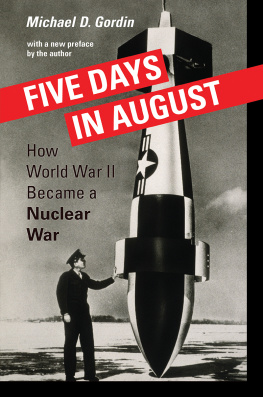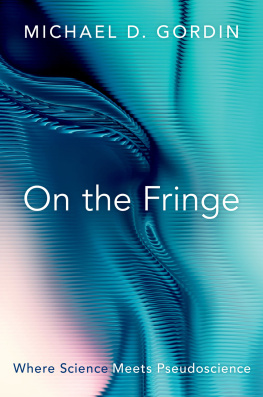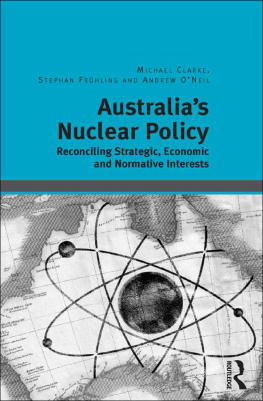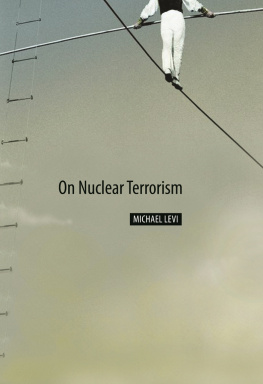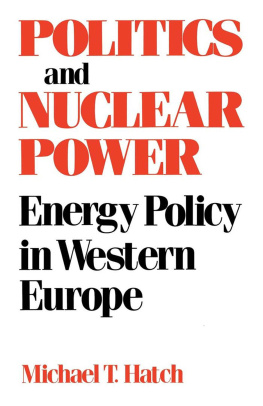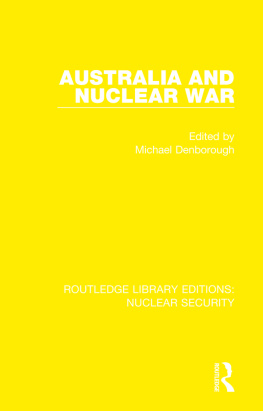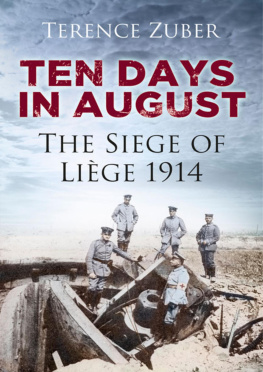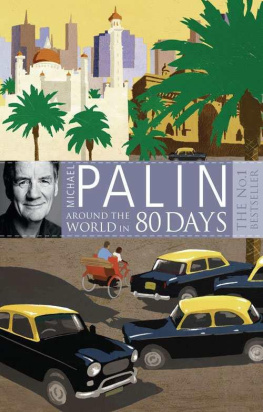Michael D. Gordin - Five Days in August: How World War II Became a Nuclear War
Here you can read online Michael D. Gordin - Five Days in August: How World War II Became a Nuclear War full text of the book (entire story) in english for free. Download pdf and epub, get meaning, cover and reviews about this ebook. year: 2015, publisher: Princeton University Press, genre: Politics. Description of the work, (preface) as well as reviews are available. Best literature library LitArk.com created for fans of good reading and offers a wide selection of genres:
Romance novel
Science fiction
Adventure
Detective
Science
History
Home and family
Prose
Art
Politics
Computer
Non-fiction
Religion
Business
Children
Humor
Choose a favorite category and find really read worthwhile books. Enjoy immersion in the world of imagination, feel the emotions of the characters or learn something new for yourself, make an fascinating discovery.
- Book:Five Days in August: How World War II Became a Nuclear War
- Author:
- Publisher:Princeton University Press
- Genre:
- Year:2015
- Rating:4 / 5
- Favourites:Add to favourites
- Your mark:
- 80
- 1
- 2
- 3
- 4
- 5
Five Days in August: How World War II Became a Nuclear War: summary, description and annotation
We offer to read an annotation, description, summary or preface (depends on what the author of the book "Five Days in August: How World War II Became a Nuclear War" wrote himself). If you haven't found the necessary information about the book — write in the comments, we will try to find it.
Five Days in August: How World War II Became a Nuclear War — read online for free the complete book (whole text) full work
Below is the text of the book, divided by pages. System saving the place of the last page read, allows you to conveniently read the book "Five Days in August: How World War II Became a Nuclear War" online for free, without having to search again every time where you left off. Put a bookmark, and you can go to the page where you finished reading at any time.
Font size:
Interval:
Bookmark:

FIVE DAYS IN AUGUST
FIVE DAYS IN AUGUST
How World War II Became a Nuclear War
Michael D. Gordin
with a new preface by the author
Princeton University Press
Princeton and Oxford
Copyright 2007 by Princeton University Press
Published by Princeton University Press,
41 William Street,
Princeton, New Jersey 08540
In the United Kingdom:
6 Oxford Street, Woodstock,
Oxfordshire OX20 1TW
All Rights Reserved
Second printing, and first paperback printing with a new preface by the author, 2015
Paperback ISBN: 978-0-691-16843-2
The Library of Congress has cataloged the cloth edition as follows:
Gordin, Michael D.
Five days in August : how World War II became a nuclear war / Michael D. Gordin.
p. cm.
Includes bibliographical references and index.
ISBN-13: 978-0-691-12818-4 (alk. paper)
ISBN-10: 0-691-12818-9
1. Hiroshima-shi (Japan)HistoryBombardment, 1945. 2. Nagasaki-shi (Japan)HistoryBombardment, 1945. 3. Atomic bombUnited StatesHistory. 4. World War, 19391945Japan. 5. Capitulations, MilitaryJapanHistory20th century. I. Title.
D767.25.H6G67 2007
940.54'2521954dc22 2006049337
British Library Cataloging-in-Publication Data is available
This book has been composed in Aldus
Printed on acid-free paper.
press.princeton.edu
Printed in the United States of America
10 9 8 7 6 5 4 3 2
For Katie
The world is what it is, that is, nothing much. Since yesterday, that is what everybody knows, thanks to the tremendous concert which the radio, newspaper, and information agencies have just started on this subject of the atomic bomb. We are informed, indeed, in the middle of piles of enthusiastic commentaries, that any city of average size can be totally razed by a bomb the size of a soccer ball.
Albert Camus, 8 August 1945
In recent years, in classes and special lectures, Ive had many occasions to describe to younger people the [Manhattan] project, the [atomic] bomb, and its use. Ive found that at the start a very wide gap separates us. The first thing most of my listeners learned about World War II is that we won it. That is, so to speak, the last thing I learned about it. The first thing they learned about the atomic bomb is that we dropped one on Hiroshima and another on Nagasaki. That is the last thing I learned about the project.
Herbert F. York
for there is nothing either good or bad, but thinking makes it so
Hamlet, II.ii
Contents
Illustrations
. |
. |
. |
. |
. |
. |
. |
Preface to the Paperback Edition
W E TALK ABOUT nuclear weapons differentlydifferently from other weapons, differently from other topics military or civilian. Yet we talk differently in the same way. There has been a striking lack of variety in the rhetoric surrounding these devices in the seventy years since the atomic destruction, three days apart, of the Japanese cities of Hiroshima and Nagasaki during what people soon came to realize were ultimately the final days of the Second World War. The sameness calls for explanation, and astute observers have offered several for the unique status of nuclear weapons in contemporary cultures around the world: the awe-inspiring power of manipulating the atomic nucleus; the tremendous destruction these weapons can inflict; the overwhelming role they had played in structuring the global world order during the decades of Cold War; the taboo that some have identified in using them in conflict (rather, using them again in conflict). Each explanation captures a crucial aspect of how people discuss nuclear weapons, but each also has a temporal flatness, a constancy. We talk about nuclear weapons as a breed apart because this is what they aredistinctiveness is part of their essence, and they have always been this way.
Contemporary rhetoric provides ubiquitous evidence of the unique status of nuclear weapons. Consider, for example, the registers of politicians and activists speech on two issues: how they talk about organizations (states or non-state actors, for example) acquiring these weapons; and how they talk about what to do with the arsenals of those weapons that currently exist.
The first topic, nuclear proliferation, is intimately tied to nuclear weapons themselvesafter all, a state cannot possess nuclear weapons without at some point having transitioned from not having themyet it is difficult to find pundits describing the British (1952) or Soviet (1949) development of such weapons (let alone the American acquisition of nuclear weapons in 1945) as proliferation. The Nuclear Non-Proliferation Treaty of 1968 (entering into force in 1970), in fact demarcates the five nuclear powers (those above, plus France and the Peoples Republic of China, which tested their first weapons in 1960 and 1964, respectively) as distinct from everyone else. The others risk legal sanction or invasion if they embark on nuclear projects. Of course, nuclear weapons are dangerous, and it is reasonable that the international community be concerned about an increasing abundance of massive destructive potential around the world. I raise the question of proliferation because there is manifestly far less concern about rocket-propelled grenades, assault rifles, and handguns, each of which have killed a lot more people since 1945 than nuclear weapons. (By contrast, the present debate about drones indicates that such a conversation can certainly emerge with conventional weapons, although even in this case there is perhaps something about the futuristic aspect of these devices that marks them as qualitatively different.)
The second topic has a similar structure. Over the past decade, various influential statesmen have begun to articulate a vision of a world without nuclear weapons. (The disarmament community has been imagining such a world since Hiroshima and Nagasaki, but only recently has the conversation come to be represented as a practical one.) Early into his first term as president of the United States, Barack Obama firmly expressed his commitment to the goal of a world without nuclear weapons in a speech in Prague. He is not alone; there are hundreds of other current and former decision makers in the apexes of power around the world rallying behind the slogan of Global Zero. There are many arguments for a serious political commitment to rid the planet of nuclear weapons, as well as strategic and security concerns pushing against it. I dwell on the direction of this discussion not to advocate one way or the other but merely to note that there is a conversation about global nuclear arsenals. We lack a similar intense push about explosive munitions that destroy cities and kill human beings but rely on solely chemical means. Nuclear weapons are a category apart.
The central argument of this book is that this way of thinking about nuclear weapons has a history. There was a time, early in the development of these armaments, when you could find a variety of alternative ways of considering their implications among the relatively small set of individuals who knew their potential. Today, there is a sharp line between conventional and unconventional weapons, and no category of the latter is more privileged, more feared, than the nuclear. Before nuclear weapons had been developed and shown to actually explode with enormous destructive force, such a crisp boundary between nuclear weapons and every other kind of aerial bomb did not exist. That border is a historical creation, and it has a birth date: late in the summer of 1945. Nuclear weapons acquired their aura of being speciala designation that will come up many times in the pages to followbecause of the particular circumstances of their use in the final stages of a global conflagration, not because of a transhistorical essence that inheres to these ingeniously-engineered lumps of metal and plastic.
Next pageFont size:
Interval:
Bookmark:
Similar books «Five Days in August: How World War II Became a Nuclear War»
Look at similar books to Five Days in August: How World War II Became a Nuclear War. We have selected literature similar in name and meaning in the hope of providing readers with more options to find new, interesting, not yet read works.
Discussion, reviews of the book Five Days in August: How World War II Became a Nuclear War and just readers' own opinions. Leave your comments, write what you think about the work, its meaning or the main characters. Specify what exactly you liked and what you didn't like, and why you think so.

